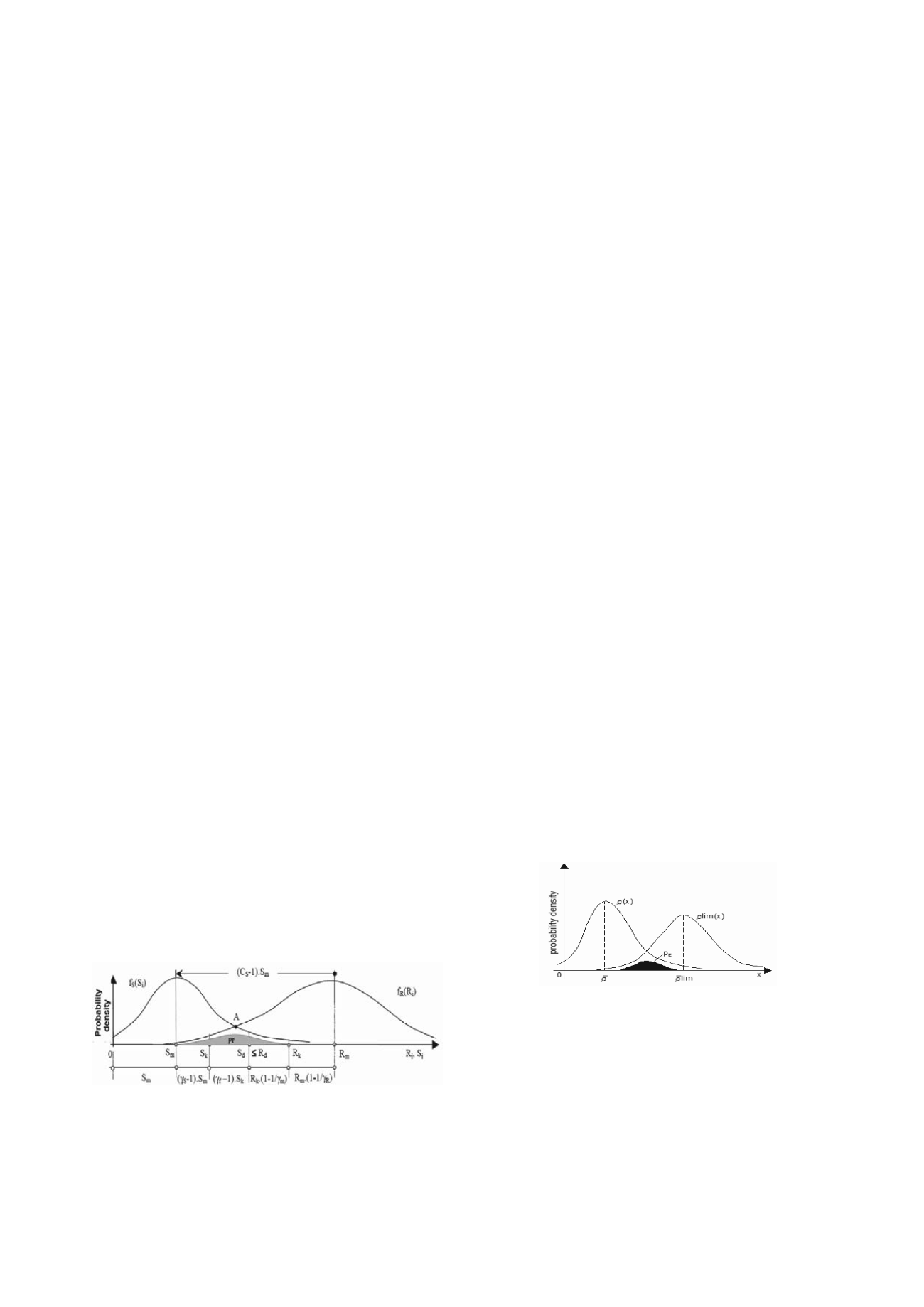
3443
Estimating settlements of footings in sands – a probabilistic approach
Estimation des tassements de semelles dans les sables – une approche probabiliste
Bungenstab F.C., Bicalho K.V., Ribeiro R.C.H.
Federal University of Espirito Santo – UFES – Vitória/ES, Brazil.
Aoki R.C.H.
Engineering School of São Carlos – USP, São Carlos/SP, Brazil.
ABSTRACT: This paper discuss about probabilistic settlement analysis of footings in sands, focusing on the load curve (estimated
settlements). For this purpose, three methodologies that take the First and Second Order Second Moment (FOSM and SOSM), and
Monte Carlo Simulation (MCS) methods for calculating mean and variance of the estimated settlements through Schmertmann’s 1970
equation are discussed. The deformability modulus (E
Si
) is considered varying according to the division of the soil into sublayers and
it is analyzed as the only independent random variable. As an example of application, a hypothetical case in state of Espirito Santo,
Brazil, is evaluated. Simulations indicate that there is significant similarity between SOSM and MCS methods, while the FOSM
method underestimates the results due to the non-consideration of the high orders terms in Taylor’s series. The contribution to the
knowing of the uncertainties in settlement predictions can provides a more safety design.
RÉSUMÉ : Cet article traite de l'approche probabiliste de l’estimation des tassements de semelles dans les sables, en se concentrant
sur la courbe charge-tassements estimés. Pour ce faire, trois méthodes basées sur les moments du premier et deuxième ordre (FOSM
et SOSM), des moyennes et écarts-types et sur des simulations de Monte Carlo (MCS) ont été utilisées pour le calcul du tassement
moyen et sa variation à l’aide de l’équation de Schmertmann (1970) et sont discutées. Le module de déformabilité (ESi) est considéré
variable dû à la division du sol en sous-couches et il est considéré comme le seul paramètre indépendant et aléatoire. Comme exemple
d'application, une étude de cas situé dans l'état d'Espirito Santo, au Brésil, est discutée et évaluée. Les simulations montrent qu'il y a
une similitude significative entre les résultats obtenus par les simulations SOSM et MCS, alors que les estimations FOSM sous-
estiment les tassements en raison de la non-prise en compte des termes d'ordre élevé des décompositions en série de Taylor. La
contribution à la connaissance des incertitudes dans les prédictions de tassement peut fournir un dimensionnement plus fiable.
KEYWORDS: Sandy soils, foundations (engineering), settlement of structures, reliability (engineering), probabilities.
1 INTRODUCTION
Probabilistic or reliability studies and risk evaluation have
become increasing popular in geotechnical engineering only in
the last decades (Sivakugan and Johnson 2004), while
geotechnical analysis are still usually made by conventional
deterministic approaches, based on safety factors. Most
commonly studies in probabilistic analysis reported in the
literature discuss the ultimate limit state (ULS), representing the
probability of a foundation to failure, p
F
. According to Aoki et
al. (2002), this probability is function of relative position and
scatter degree of the probability density curves of solicitation,
fs(S), and resistance, F
R
(R), as shown in figure 1, so:
(1)
Figure 1. Solicitation and resistance curves and factors of safety –
Reliability analysis of a foundation at the ULS (Aoki et al., 2002).
The same probabilistic concept can be applied to analyze the
serviceability limit state (SLS) of a foundation (figure 2). In a
foundation settlement analysis, the probability of failure
becomes the probability of predicted or estimated settlement
(calculated with service loads) to exceed limiting settlement
(limiting movement affecting visual appearance, serviceability
or function and stability). Here, solicitation and resistance
functions assume the variability of predicted and limiting
settlements, respectively, which are treated as dependent
random variables. The probability of SLS to failure, p
E
is then:
(2)
0
lim
). (
). (
dx x
x
p
E
Figure 2.
Solicitation and resistance curves – Reliability analysis of a foundation
at the SLS.
0
)( ). (
dx S fRF p
S
R
F
In the specific case of settlements of footings in sands, the
predicted settlements can be evaluated through traditional
methods, such as: Schmertmann (1970), Schmertmann et al.
(1978), Burland and Burbidge (1984), Berardi and Lancellotta
(1991). The limiting settlements evaluation can be made by
using observational, empirical, structural or numerical
modelling methods (Negulescu and Foerster 2010), but are
beyond the scope of this paper.
This paper focuses on the solicitation curve and assumes, as
a simplification, that the variability of the resistance (limiting
settlement) curve is zero (i.e. it has been considered constant for


